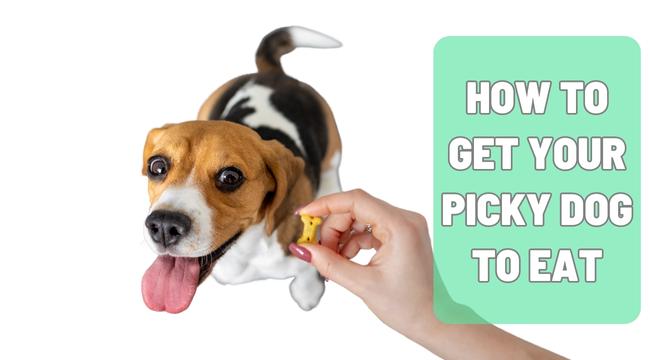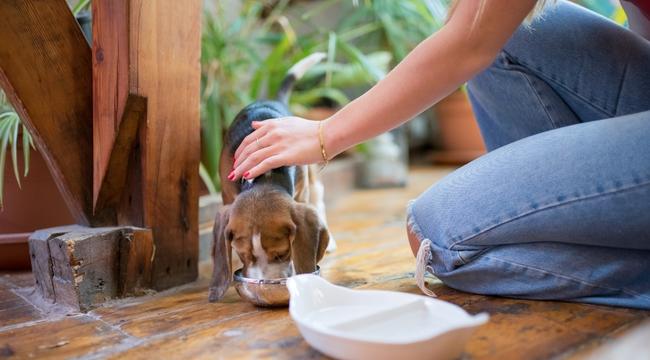
The topic of picky eating in dogs is frequently discussed among pet owners. Many dog owners struggle to understand why their four-legged friends can be so stubborn regarding food. Some would say smaller Groodles or smaller breeds of dogs are easier to feed than Huskies or bigger dogs in general, but the truth is, there are a variety of reasons why a dog might be a picky eater and understanding them can help you make sure your dog gets the nutrition they need to stay healthy and happy. This article can teach you how to get a picky dog to eat and ensure that they receive the necessary nutrition to maintain their health and happiness.
Why Is Your Dog a Picky Eater
It can be frustrating when your beloved furry friend turns their nose up at their food. However, it’s important to understand that picky eating is a common issue among dogs. There are many reasons why your dog may be a picky eater, and it’s essential to identify the underlying cause to address the issue.
Your dog may be picky because they are not hungry. If your dog gets lots of treats or table scraps throughout the day, they may not feel hungry when it’s time for their regular meal. In this case, it’s important to limit their access to snacks and ensure that they’re only getting food during scheduled meal times.
Another possible reason for picky eating is that your dog doesn’t like the taste or texture of their food. This may be due to a change in their food brand, the presence of a new ingredient they don’t like, or even a change in the texture of the food. In this case, it’s important to experiment with different brands and types of food to see what your dog prefers.
Dental issues can also be a contributing factor to picky eating. If your dog is experiencing pain or discomfort in their mouth, it may not want to eat hard or crunchy foods. Regular dental check-ups and cleanings can help prevent these issues.
Stress and anxiety can also cause picky eating in dogs. If your dog is experiencing a change in routine or environment, it may become anxious and lose its appetite. In this case, it’s important to provide your dog with a safe and comfortable environment and help them adjust to any changes gradually.
How to Feed a Picky Dog

Having a picky dog can be frustrating and worrying for any pet owner. You might be wondering what to do when your furry friend refuses to eat their meals, leaving you concerned about their health and well-being. Fortunately, there are a few tricks that you can try to get your picky dog to eat.
Stick to a Feeding Schedule
One way to encourage your dog to eat is to stick to a consistent feeding schedule. This means offering meals at the same time every day, ideally two to three times a day. When you establish a routine, your dog’s body will become accustomed to eating at certain times, which can help to increase their appetite.
Limit Treats and Table Scraps
If your dog is refusing to eat their regular meals, it can be tempting to offer them treats and table scraps instead. However, this can lead to your dog becoming even pickier about its food. Limiting treats and table scraps can help your dog to develop a better appetite for their regular meals.
Add a Tasty Topper
Another way to get your picky dog to eat is to add a tasty topper to their food. This could be something like cooked chicken, canned pumpkin, or plain yoghurt. Adding a small amount of a tasty topper can make your dog’s food more appealing and encourage them to eat.
Understand Your Dog’s Preferences
Every dog is different, so it’s important to understand what type of food your dog likes before trying to introduce new foods. Start by offering small portions of several different types of food and take note of which ones your dog likes the most. This will help you determine which types of food are best suited for your dog.
Give Them Balanced Nutrition
It’s essential that you provide balanced nutrition for your dog. Look for dog food formulas that contain quality proteins, carbohydrates, fats, vitamins, minerals, and other essential nutrients in appropriate proportions. Quality ingredients are also important; look for brands with limited fillers and artificial ingredients and avoid those with animal by-products or questionable ingredients like corn syrup or added sugars. A dog that is not satisfied with its food because the ingredients are substandard will be less likely to want to eat the same thing again.
Experiment with Flavors and Textures
Different dogs prefer different flavours and textures when it comes to their meals. Try offering a mix of wet and dry foods in several different flavours to find out what your dog enjoys the most. There are pros and cons to both wet and dry foods, so finding a good balance is the most important factor.
Offer Variety
Variety is key when it comes to keeping meals interesting for picky eaters – try switching up the proteins you offer from time to time so that your dog doesn’t get sick of the same food every day. Just be sure that whatever you feed your dog is primarily made of high-quality ingredients, and avoid artificial flavours.
Incorporate Treats
Picky eaters may need a little extra motivation during mealtime; try incorporating treats into mealtime as a way to make mealtimes more enjoyable for them. Just make sure these treats are low-calorie, so they don’t interfere with their daily nutritional intake. Additionally, use positive reinforcement during mealtime – reward your dog with verbal praise or physical affection when they do eat something.
Make Mealtimes Interesting
Try adding puzzle toys or other interactive elements into mealtimes to keep things interesting for your dog – this could help increase their enthusiasm for chowing down. Scatter feeding, puzzle feeders, slow feeders and snuffle mats are all easy ways to give your dog some challenge during meals.
Consult with Your Vet
If your picky dog still refuses to eat, it’s important to consult with your vet. They can rule out any underlying health issues that may be causing your dog’s lack of appetite. Your vet may also be able to recommend a specialized diet or supplements that can help to improve your dog’s appetite.
Monitor Intake
Many dogs will simply not feel like eating every once in a while but will return to normal mealtime behaviour soon. Keep an eye on how much your dog is eating – not eating for one day is no issue, but any longer, you should take note of this behaviour so that you can talk to your vet about possible underlying issues (e.g., digestive issues).
Conclusion
Feeding a picky dog doesn’t have to be difficult – with patience and understanding of their individual preferences and needs, you can ensure that they get all the nutrition they need while still having enjoyable mealtimes. Sticking to a feeding schedule, limiting treats and table scraps, trying different types of food, adding a tasty topper, making mealtime fun, and consulting with your vet can all help to get your picky dog to eat. With a little patience and persistence, you can help your furry friend develop a healthier and more balanced diet.



